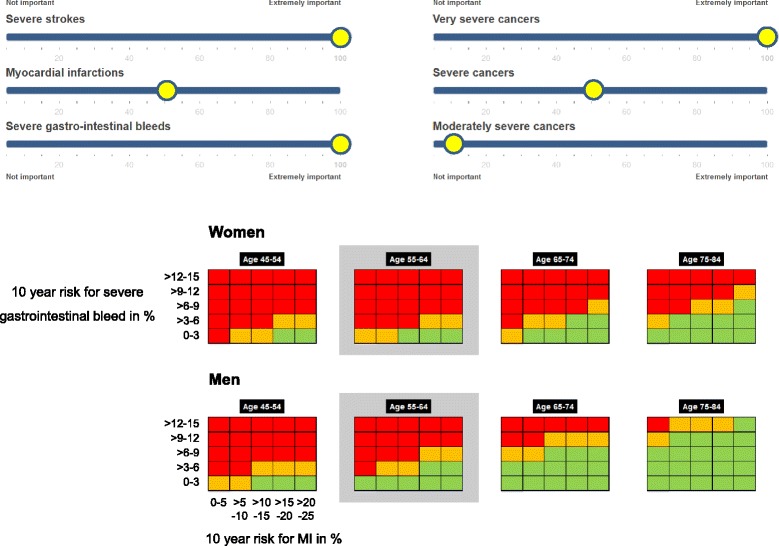Fig. 2.

Benefit-Harm Chart for low dose aspirin for women and men. The Benefit-Harm Charts show the benefit-harm balance for four age categories and, within age categories, for 25 different combinations of 10-year risks for MI and severe GI bleeds. A comparison between women and men (for example, using age category 55–64 years) suggests that more men are likely to benefit from low dose aspirin than women. It is important to note that the Benefit-Harm Charts presented here focus on very low up to moderately high risks for MI (0–25 % 10-year risk) and severe GI bleeds (0–15 % 10-year risk). If the 10-year risks of severe GI bleeds are above 20 or 30 % (in elderly men and women who experienced gastric ulcers in the past [41]), the benefit-harm balance becomes unfavorable again since the number of excess severe GI bleeds under aspirin is high
